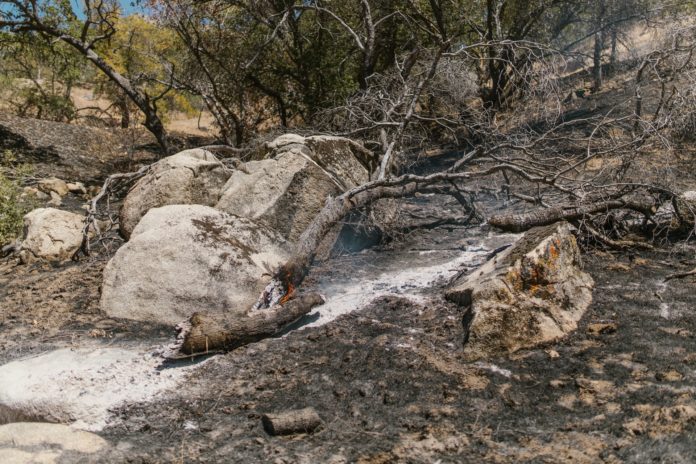The ongoing climate crisis has caused Canada’s summers to become increasingly hot and dry, and because of this, wildfires have emerged as a major threat across the country.
Yet for some species, this may not come as bad news. A recent study from the University of Saskatchewan investigated how certain species of insects use scorched forests as ideal breeding grounds, highlighting one reason why care must be taken when considering whether or not to fight wildfires.
Aaron Bell, a PhD candidate in the University of Saskatchewan’s Department of Biology, was corresponding author of the study published in Ecosphere.
Wildfires are an important part of forests’ cycles
Wildfires can have devastating impacts on our environments and communities, but in some cases, they’re necessary for forests to renew themselves. Controlled fires are also important in many Indigenous practices, where they help promote ecological diversity and manage the land.
In many instances, fires can clear weak or dead trees from forests, opening up space for new species — including plants, mammals, and insects — to thrive.
“Most animals can’t handle the heat of an active fire, but once the fire is out it becomes a beacon that attracts all kinds of things,” Bell explained in a press release.
“Many animals (not just insects but also birds and mammals) are attracted to recent burns and make use of these habitats in the immediate aftermath of fire.”
Why are ground beetles attracted to wildfires?
Among these animals are ground beetles, which quickly move into the burnt soil leftover from a wildfire, sometimes even arriving when the fire is still burning. For this reason, these insects are often referred to as pyrophilic — or fire-loving — ground beetles.
Bell and colleagues were interested in learning how pyrophilic ground beetles use burnt soil to their advantage, and how these post-wildfire habitats differ from other areas the beetles inhabit. To do this, they raised ground beetle eggs in four types of soil: recently burnt soil (collected one to two weeks after a wildfire), soil collected one year after a wildfire, soil from an unburnt patch of forest adjacent to a wildfire, and recently burnt soil which had been reheated to 100 degrees Celsius (to mimic the immediate aftermath of a wildfire).
The team found that in the case of unburnt or old-burn soil, very few eggs survived long enough to become larvae. In the majority of cases, these eggs were killed by soil-dwelling predators such as spiders, mites, and nematodes.
The researchers then placed male and female beetles in each of the four environments and tracked their reproductive outcomes. They found that beetles living in recently burnt soils yielded 80% more young than those living in unburnt soils.
The team believes that this difference is due to the fact that the beetles’ predators are unable to survive the harsh temperatures of a wildfire. The fire thus acts to clear the predators out, opening up a safe haven for beetles to lay and rear their young.
“Unburnt soils are full of small microorganisms that readily attach and kill vulnerable eggs, whereas soils exposed to the heat of forest fires are temporarily devoid of these predators and pathogens,” Bell said.
“Until now, we really didn’t understand what benefit they’re getting from colonizing the burnt environment so quickly.”
Striking a balance when it comes to fighting wildfires
This work not only sheds light on why ground beetles are drawn to burnt areas, but also highlights the importance of wildfires in our environment’s natural cycles. Fires can be devastating, and more and more frequently, they’re unintentionally caused by human activity. Yet at the same time, wildfires have a crucial role to play in our environment.
As the climate crisis continues, it will be important to strike the right balance between fighting wildfires and allowing them to burn. This means assessing whether a fire has the potential to become uncontrolled, and whether or not that uncontrolled fire will pose a risk to our communities.
It’s also important to educate the public on fire safety in order to minimize the most destructive human-sparked wildfires. These fires are often unintentional, with the potential to spread beyond our control.
“Periodic wildfire is important for maintaining healthy forests and habitat for many species that have co-evolved with fire, but fires often encroach on communities, threatening lives and human values,” Bell said.
“[H]ow do humans maintain healthy ecosystems and species that rely on fire while also keeping people […] safe? It’s important to protect humans and the things we value, but the decision to allow a fire to burn or to put it out has consequences that go beyond us.”








































